Why you can trust Tom's Hardware
Pre-installed fan tests
Maximum noise levels
In terms of maximum volume, MSI’s Pano 100R PZ can reach up to 45.6 dBA. This is about average for a case with pre-installed fans. However, as our noise-normalized thermal results in the next section will show, you don’t need to let the fans run loudly for reasonable performance.
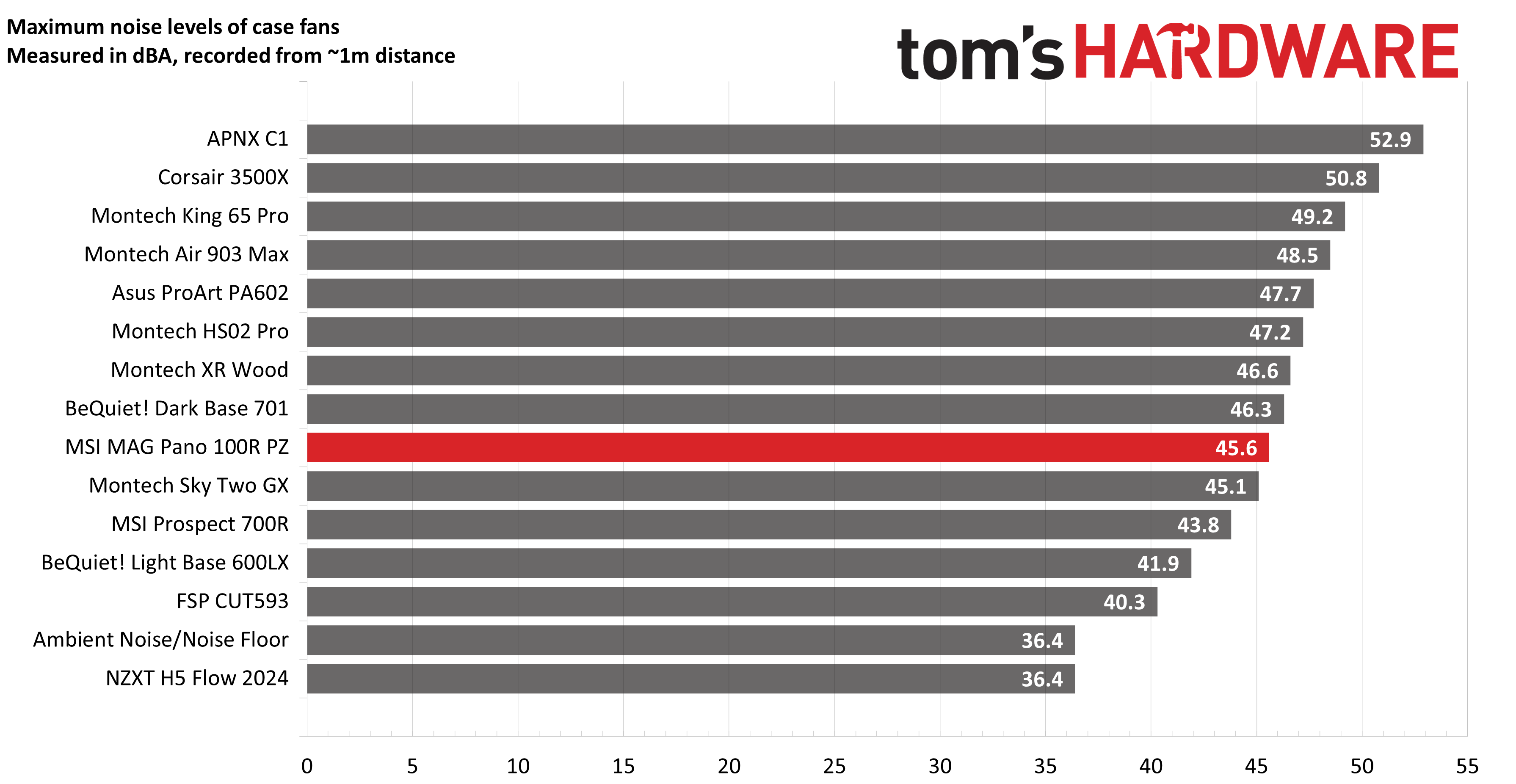
Maximum thermal performance – pre-installed fans noise-normalized to 38.9 dBA
This set of tests is designed to appeal to those who love quietly running PCs, with both system fans and the CPU fan noise normalized to 38.9 dBA. Consider this a measure of the case’s thermal efficiency when set to low noise levels using the pre-installed fans.
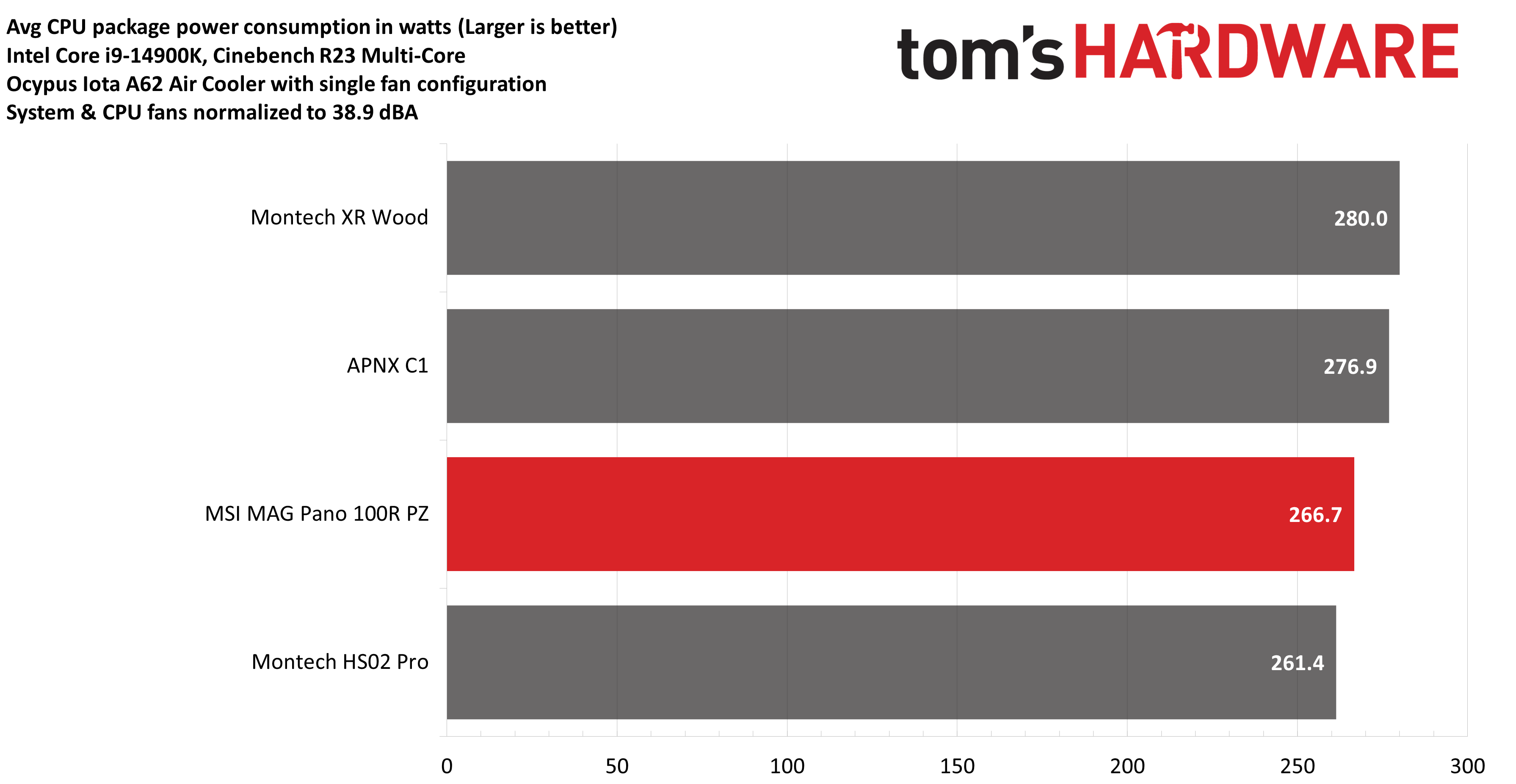
As we’ve just updated our testing methodology, our first comparisons only feature three cases in total – but this will grow as we have time to test additional products. The section featuring standardized fan testing features four cases, also including Corsair’s recently released 4000D Frame.
MSI’s Pano 100R PZ cooled 266.7 watts in our first test, which stresses only the CPU. This isn’t the greatest result in our charts, but I’d remind users that this case is designed to be used with a liquid cooler – whereas my case efficiency testing uses a traditional dual-tower air cooler.
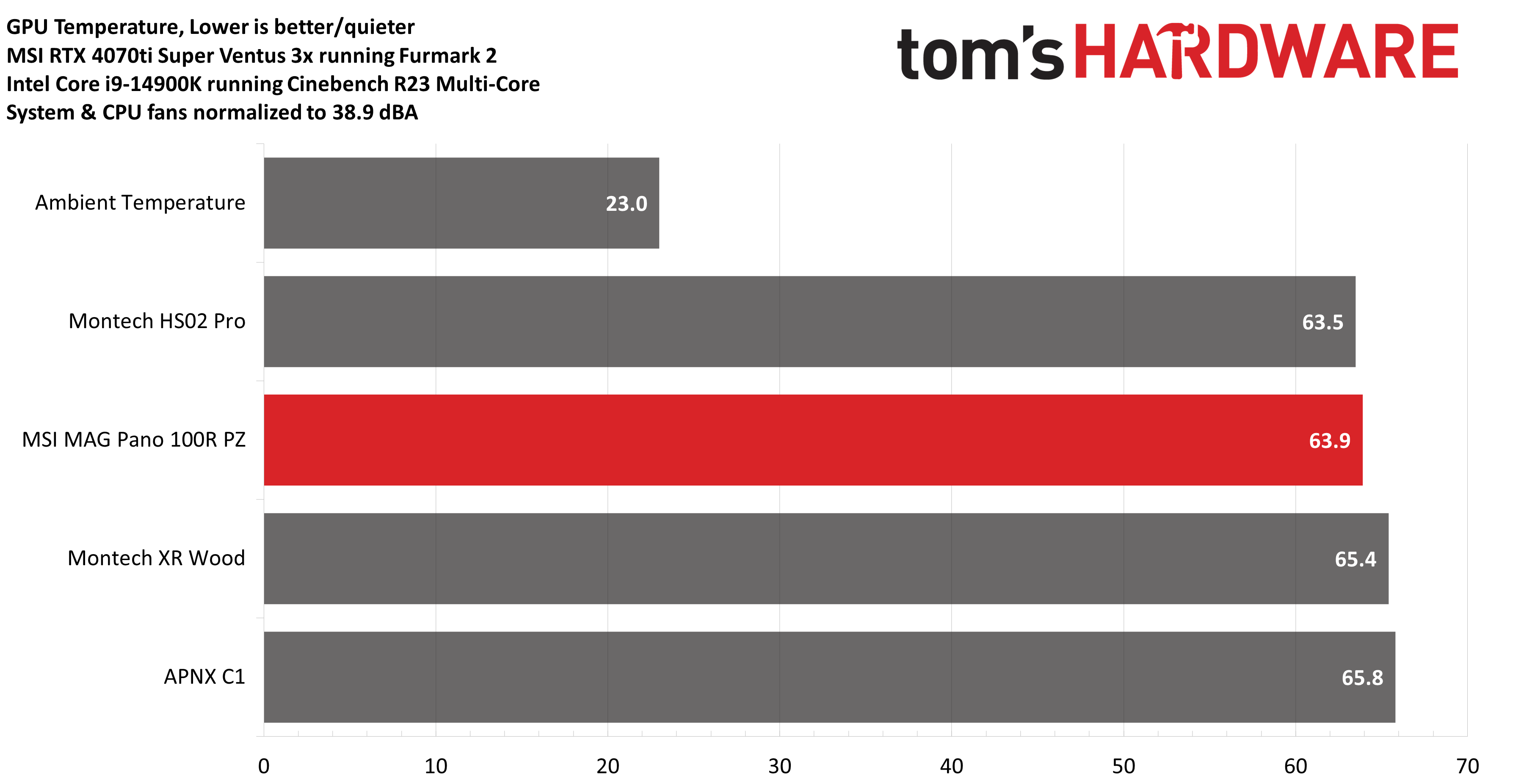
Our next chart examines a more stressful scenario, with a full load being run on both the CPU and GPU. When the heat of a GPU is added to our testing, the performance of MSI’s case is much more impressive, with the second-best GPU temperatures that I’ve seen with the limited number of cases that I’ve tested using our new methodology.
Another way to evaluate how efficiently the case dissipates heat from the GPU is to compare the RPM speeds of the GPU’s fans in its default behavior. Slower fan speeds means a quieter GPU, and as above, MSI’s performance is the second-best in this scenario!
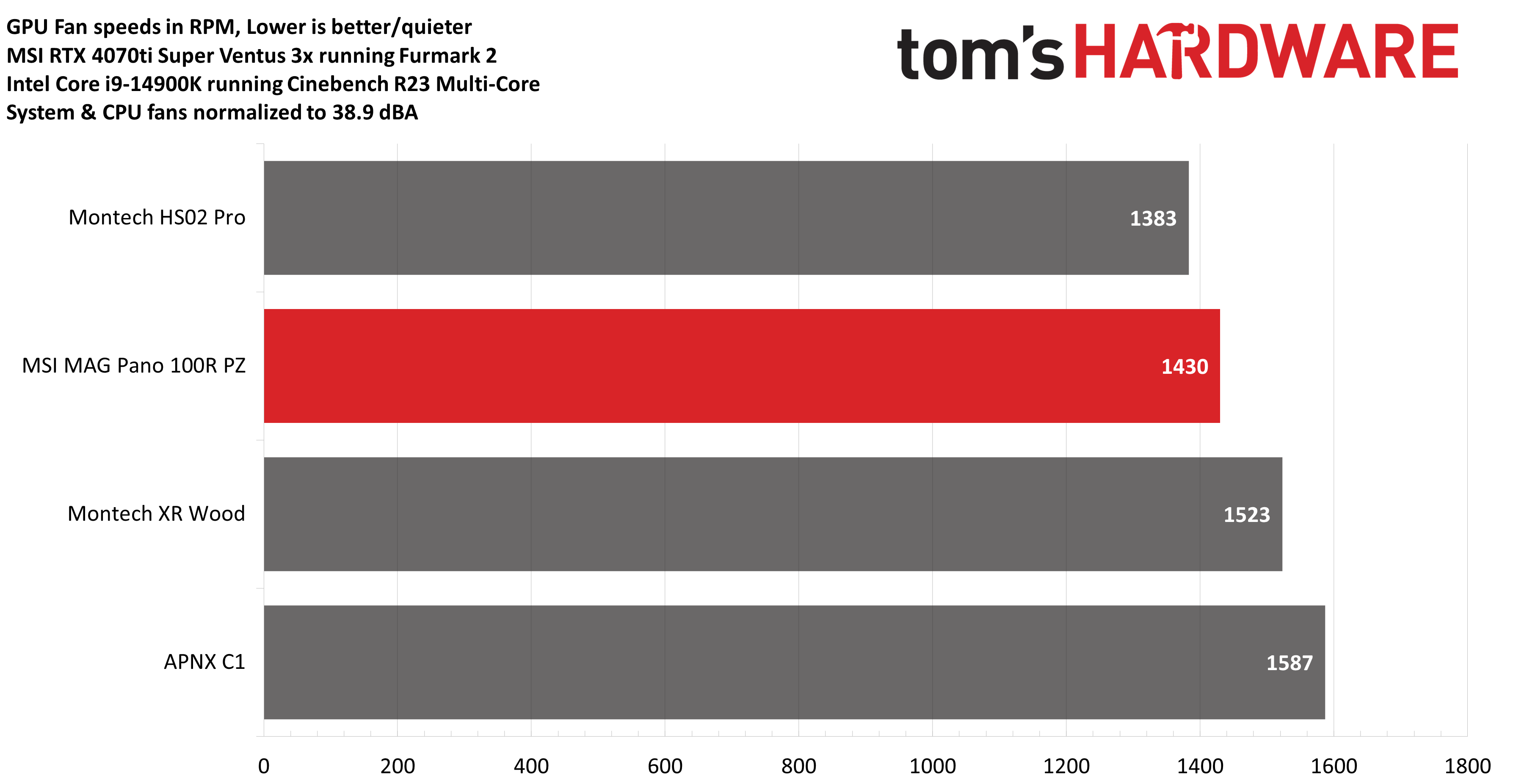
Maximum thermal performance – pre-installed fans at full speed
Taking a look at how well the case expels heat with a CPU-only workload and the fans at full speed, there’s also a small range of results – all products shown here perform similarly. MSI’s offering does well here, tied for the best results in this chart.
Get Tom's Hardware's best news and in-depth reviews, straight to your inbox.
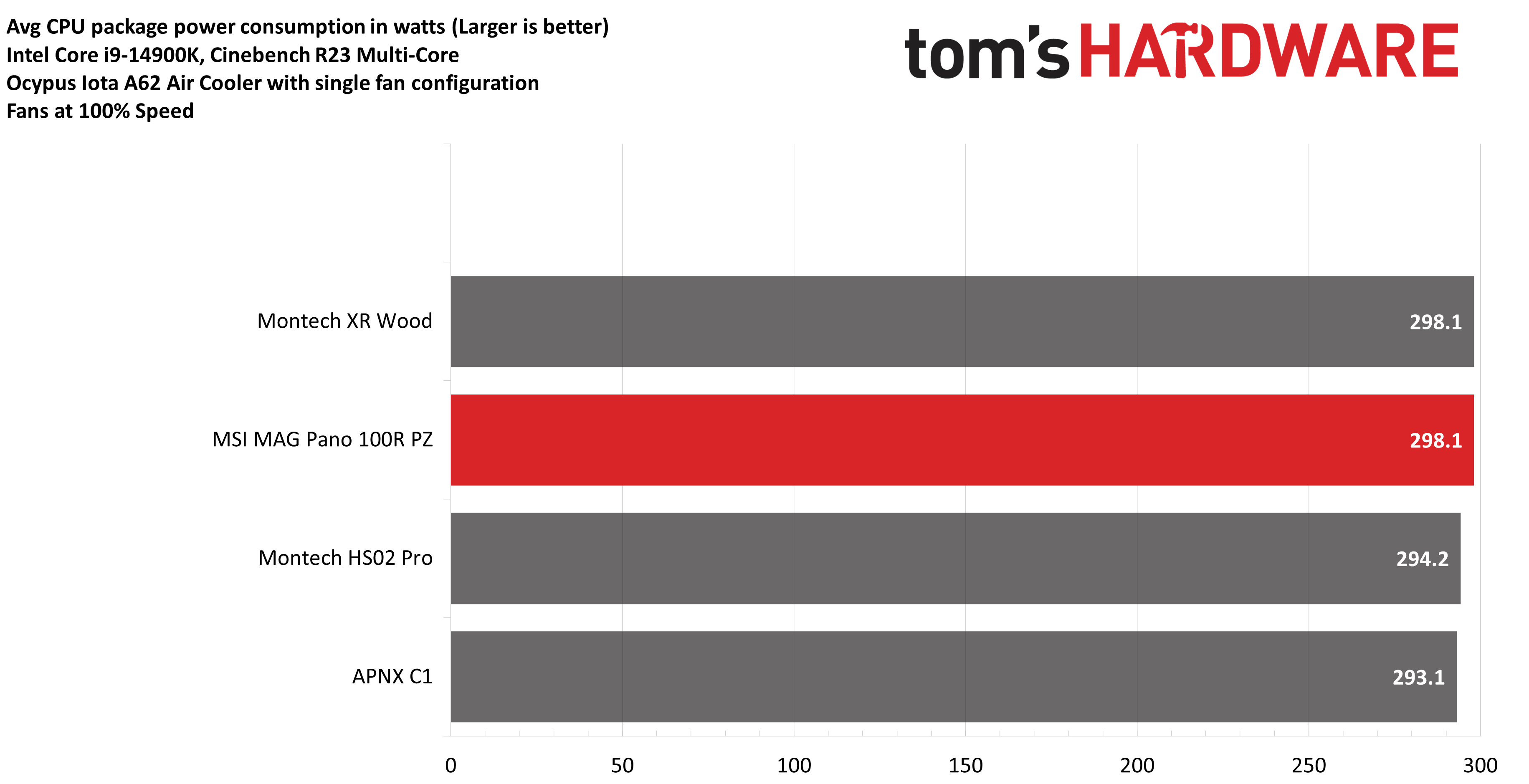
Now we’ll take a look at how the case handles GPU heat. MSI’s Pano 100R PZ does well here, again in second place. It does better than all competitors except for the Montech case with fans located directly under the GPU.

As I’ve mentioned before, those thermal improvements don’t just provide a better experience in theory. They result in a quieter GPU, as shown by the RPM measurements below.
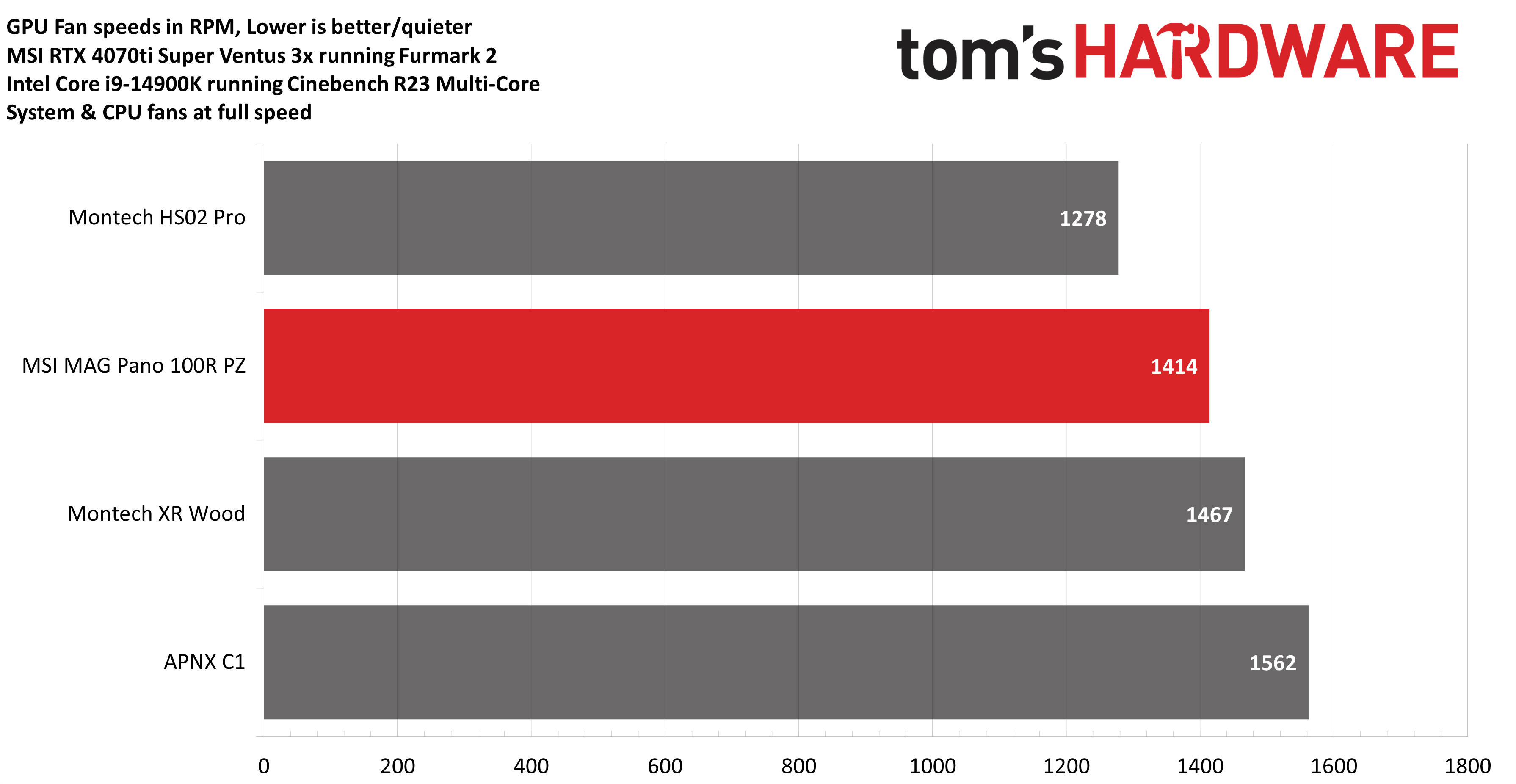
Standardized fan tests
Maximum thermal performance – 30% fan speeds
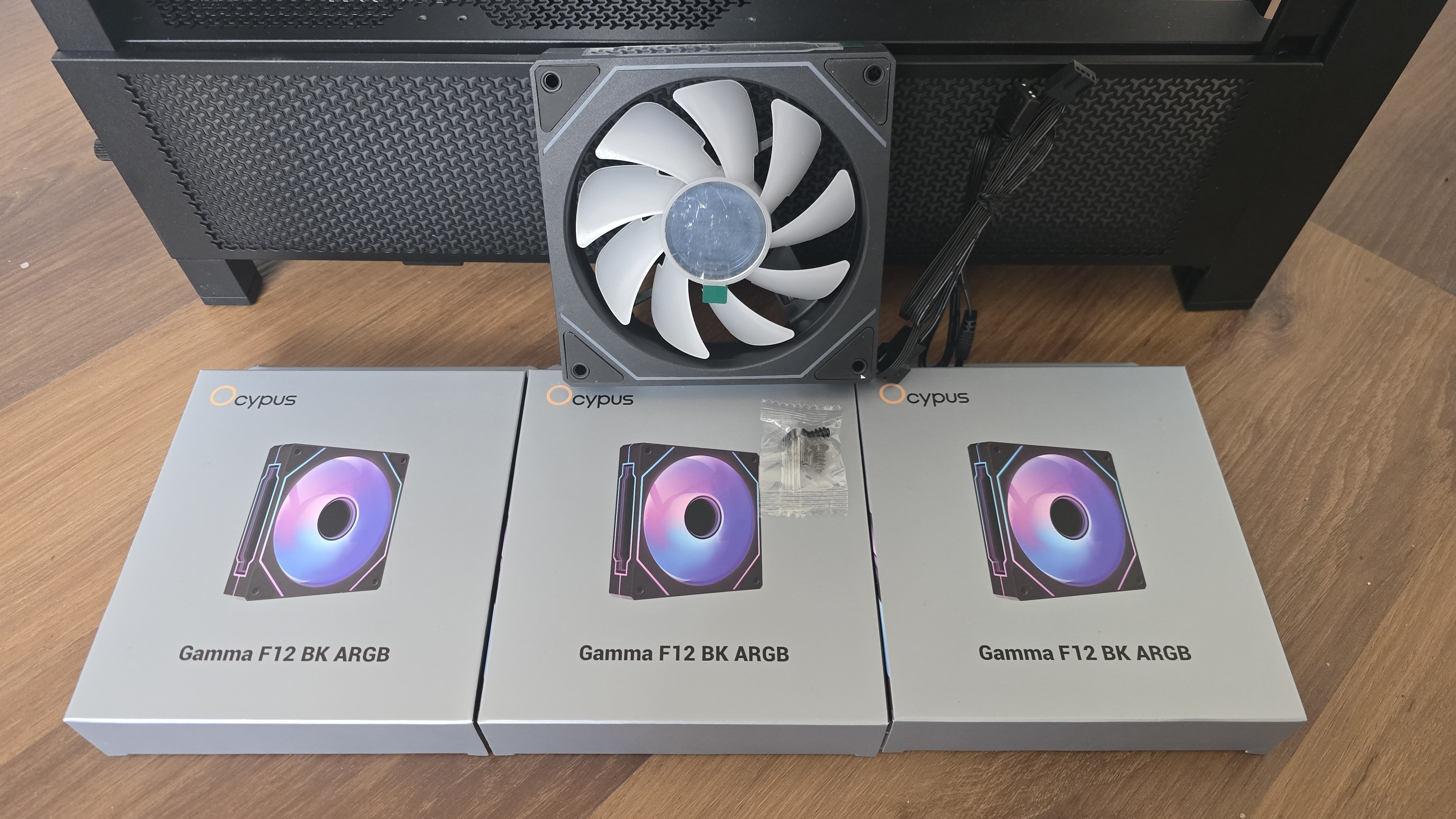
This set of tests, now using the third-party fans shown above, are designed to appeal to those who love silently running systems. With both system fans and the CPU fan limited to 30%, using Ocypus Gamma F12 BK ARGB fans for intake and exhaust, MSI’s MAG Pano 100R PZ cooled 211.9W while testing the CPU using the Cinebench R23 multi-core benchmark.
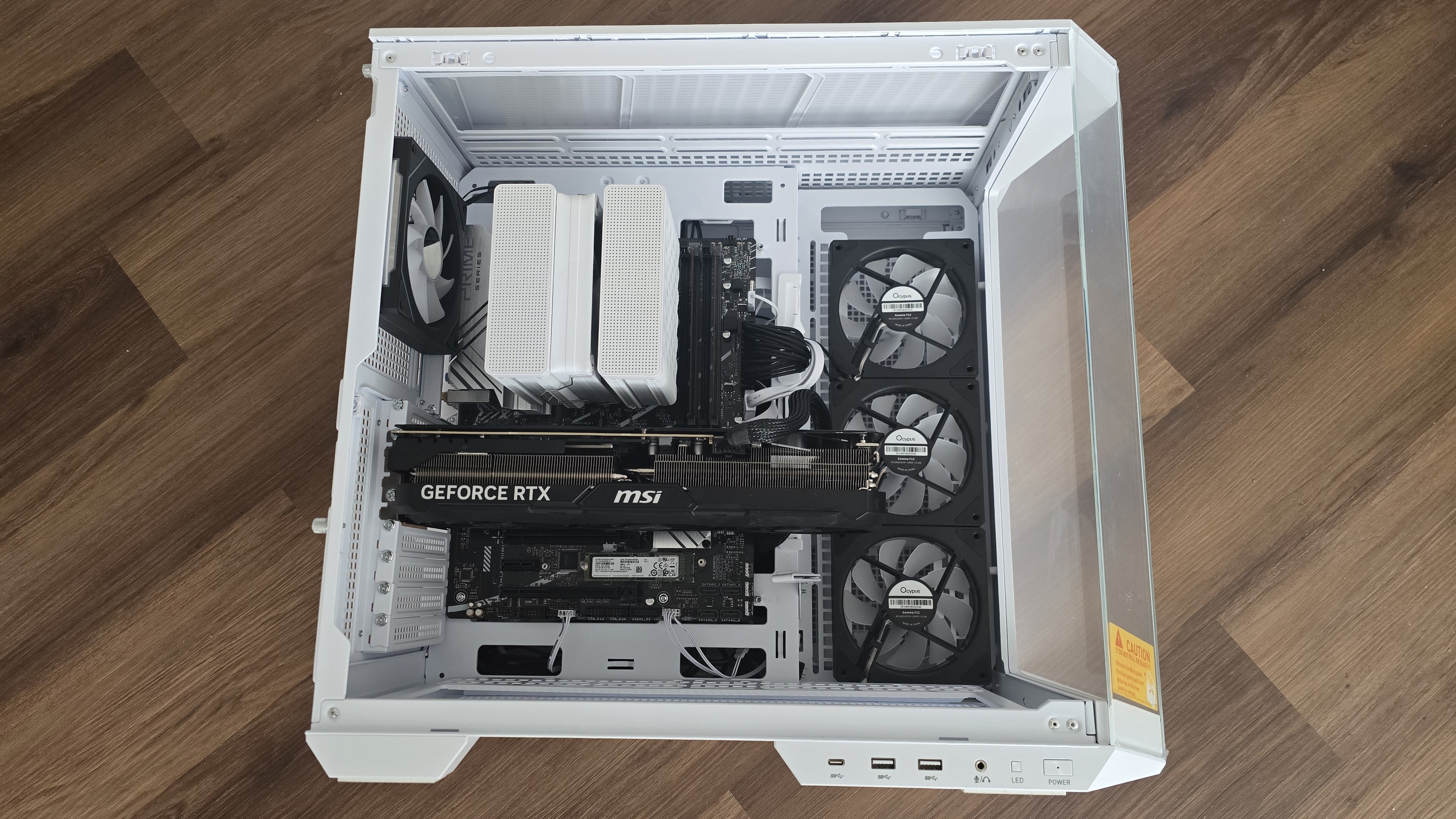
You can consider this a measure of the case’s efficiency when set to low noise levels. Finally, remember that size matters: A smaller case like Montech’s Air 903 Max might have better results due to better airflow efficiency.
But CPU-only loads are just one way to examine thermal efficiency. How do things change when, like during gaming, you run a CPU and GPU at the same time? We’ll look at both CPU package power and GPU results to answer that question.
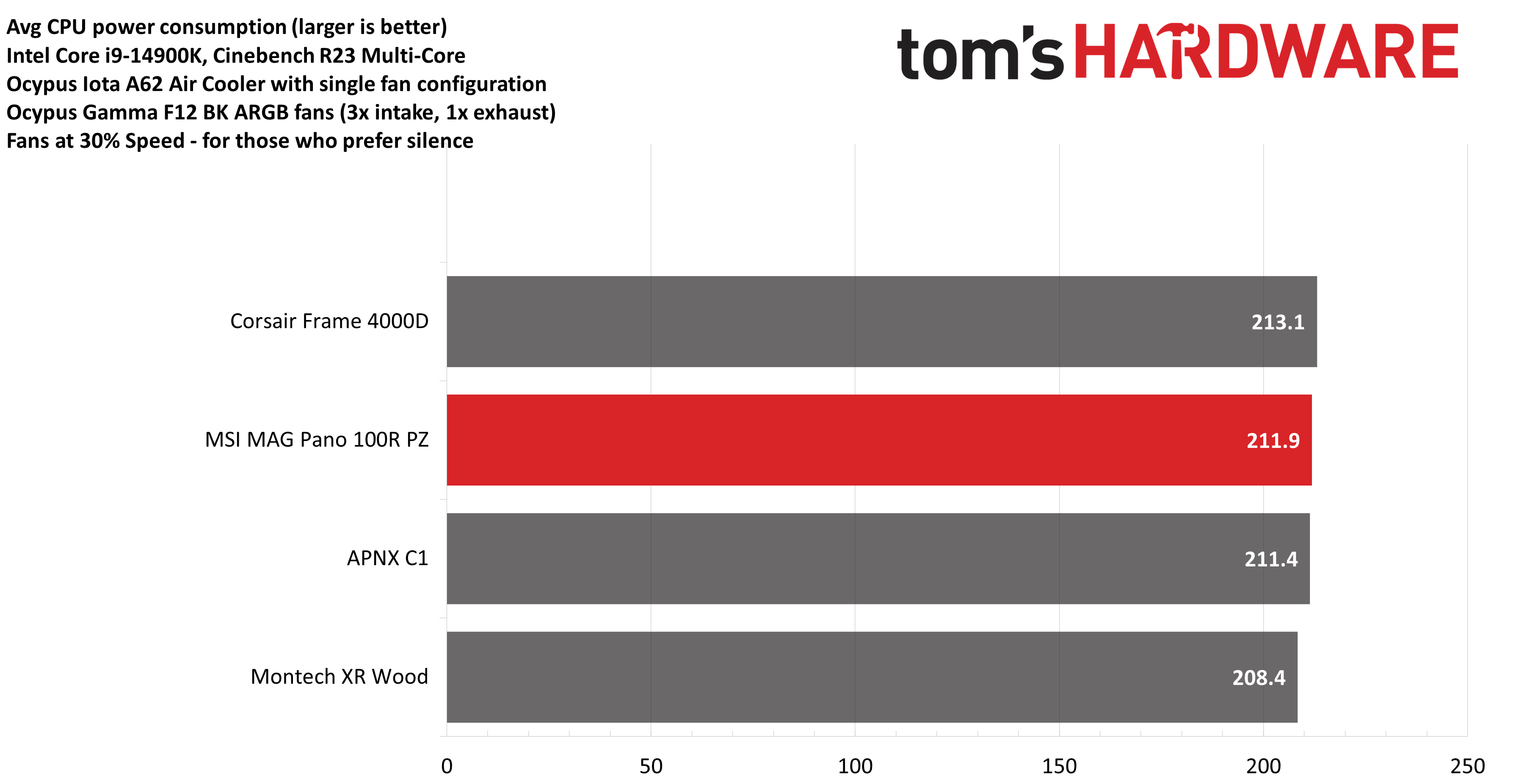
Looking at the CPU’s performance here, you’ll see there’s a small variance in results. Moving past that acknowledgement, we can see that MSI’s case showed the best thermal performance on the CPU when using a custom, standardized set of Ocypus fans.
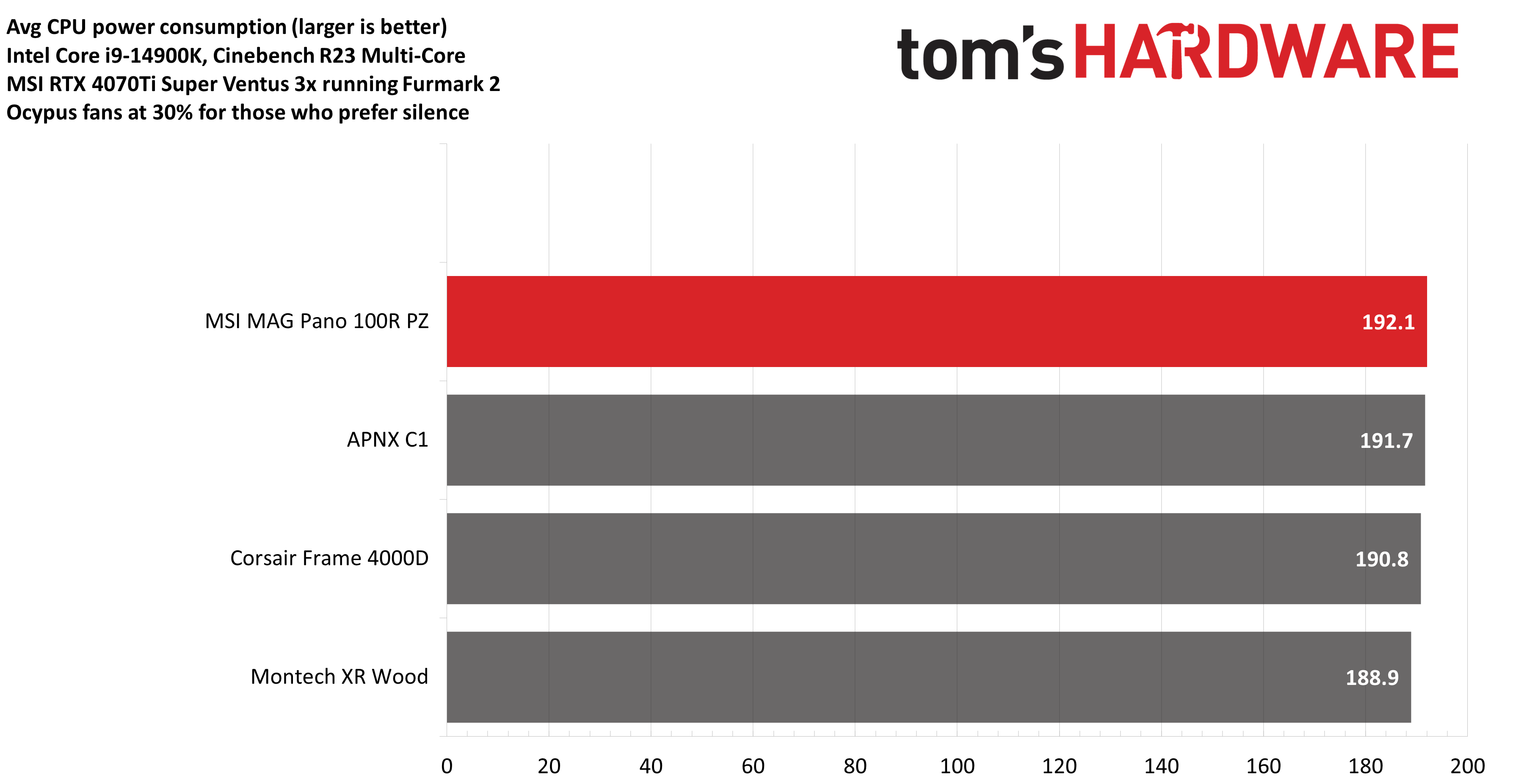
To evaluate how efficiently the case dissipates heat from the GPU, we’ve decided to compare the RPM speeds of the GPU’s fans instead of trying to control the fan speeds and measuring temperature. I expected the MSI case to perform a little better here, given our previous results using the pre-installed fans.
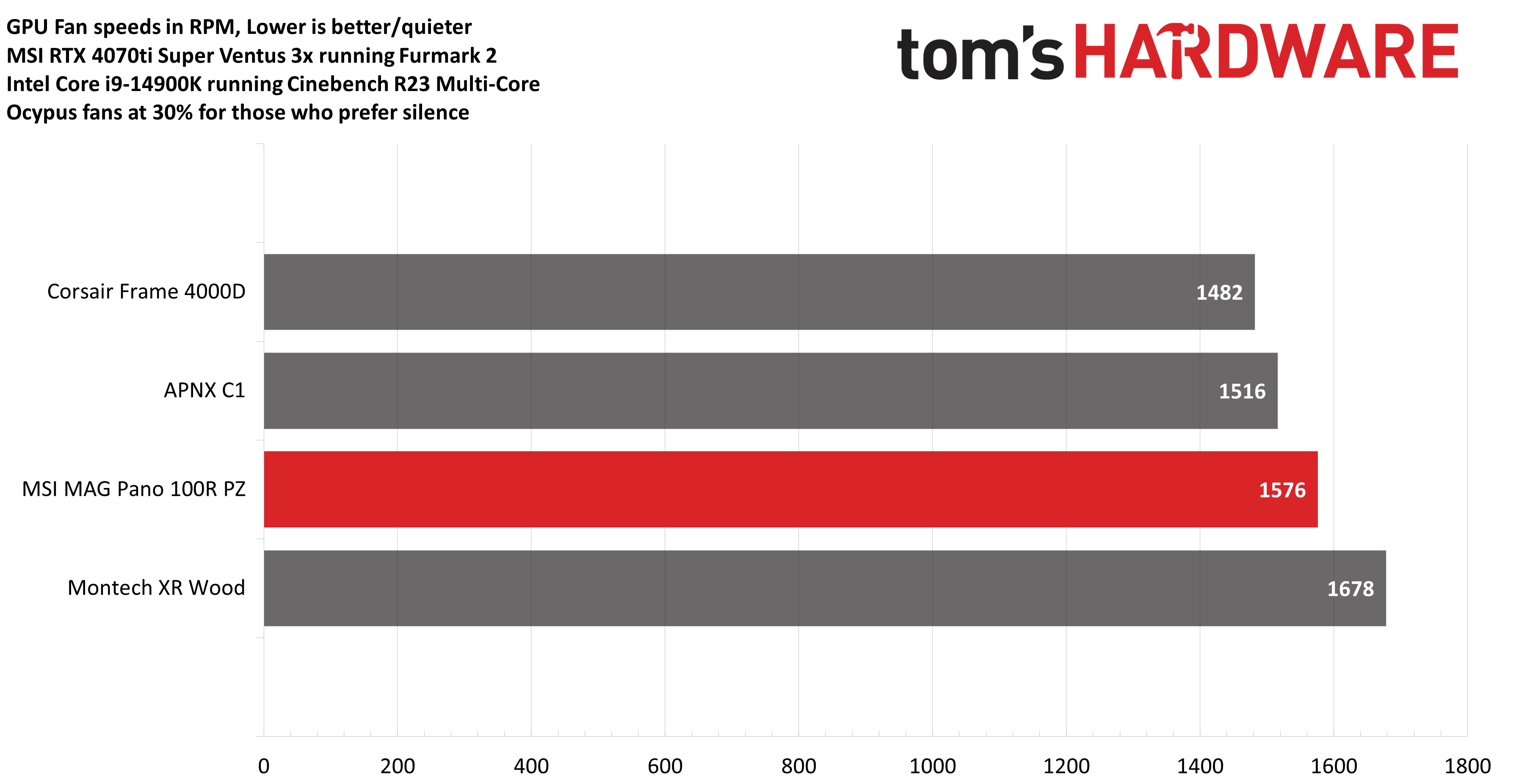
Maximum thermal load – full fan speeds
For this next test, the fans are allowed to operate at their fastest (and loudest) speeds for those who want the best thermal performance without regard to noise levels. As with before, the first test only stresses the CPU.
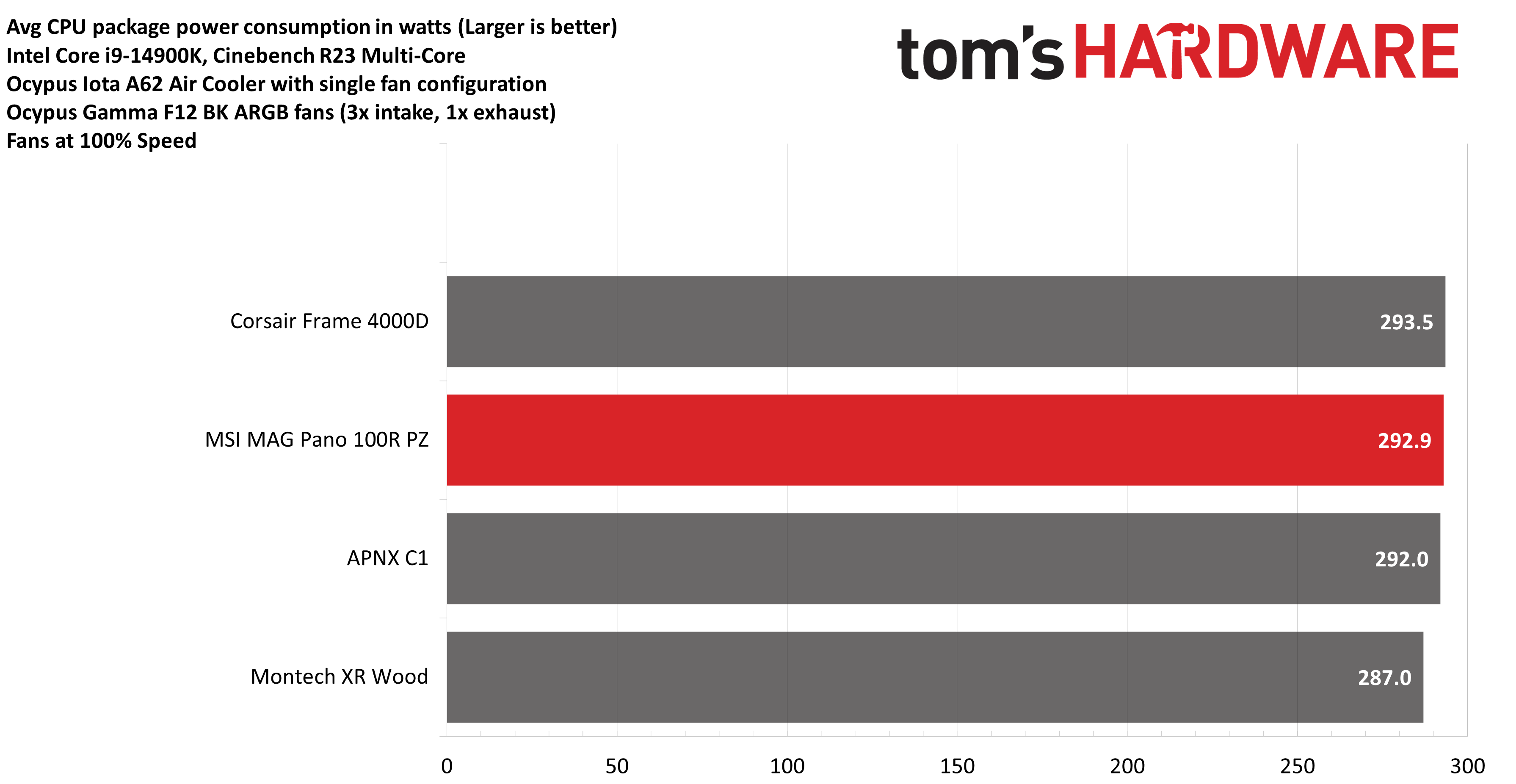
The performance here has a limited range of results, but MSI’s case again delivered the second-best results using our new testing methods – cooling 292.9W.
How does that change when a GPU load is added to the equation? Let’s take a look.
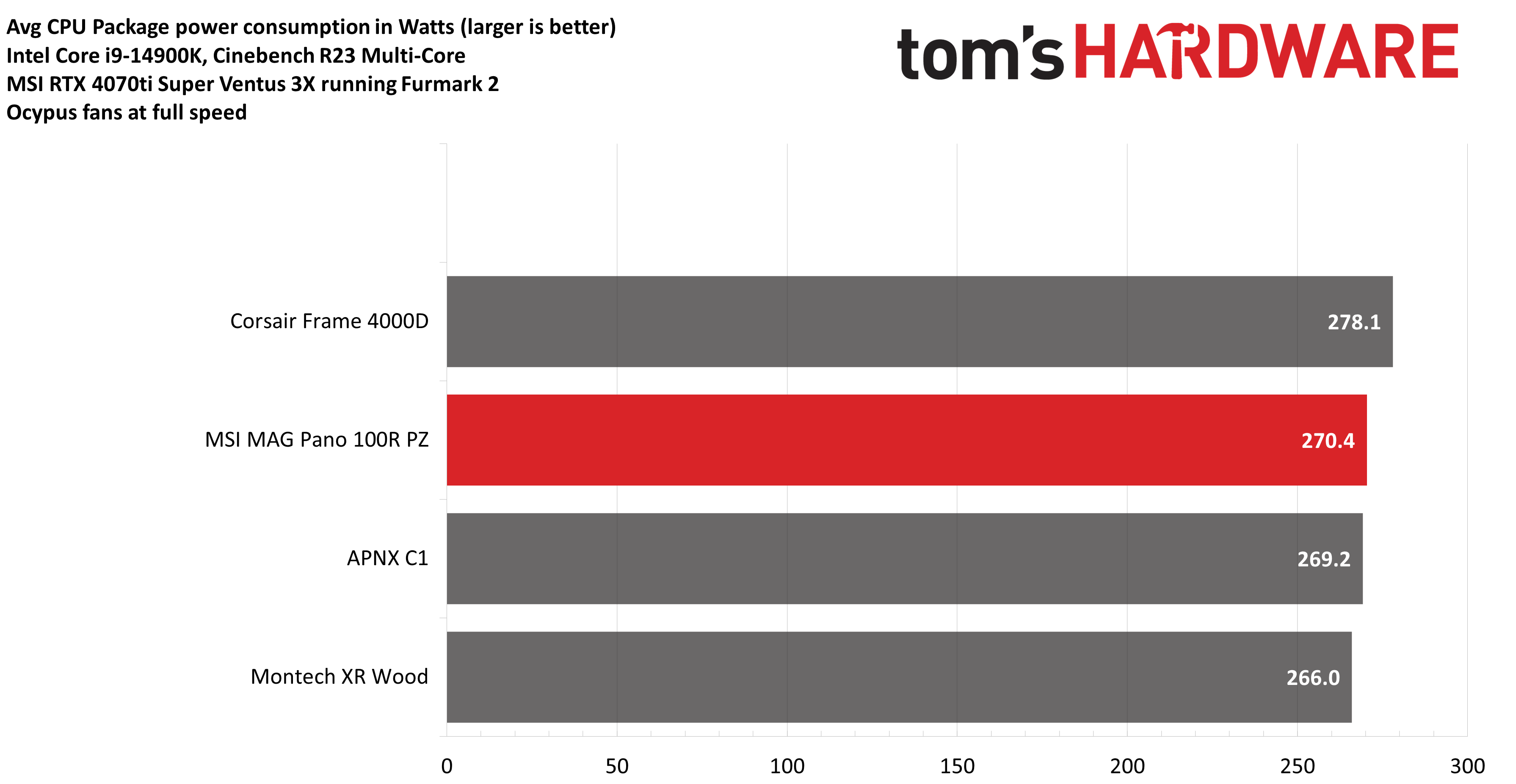
With 270.4W cooled here, it’s slightly less than the previous test due to the added heat from MSI’s RTX 4070Ti Super dGPU. But MSI maintains its second-place position in this testing.
How about the GPU’s noise levels, though?

In this configuration, where I’ve used a standardized set of fans, MSI’s performance isn’t quite as good – at least when you compare it to the results with the pre-installed fans. I suspect this might be due to differences in static pressure, but this will require more testing to say for sure.
A reminder about how to improve performance
Just as a reminder: If you’re looking for stronger thermal performance than shown in the benchmarks above, the MSI MAG Pano 100R PZ supports additional fans at the top and bottom of the case for those who want the best possible temperatures.
Conclusion
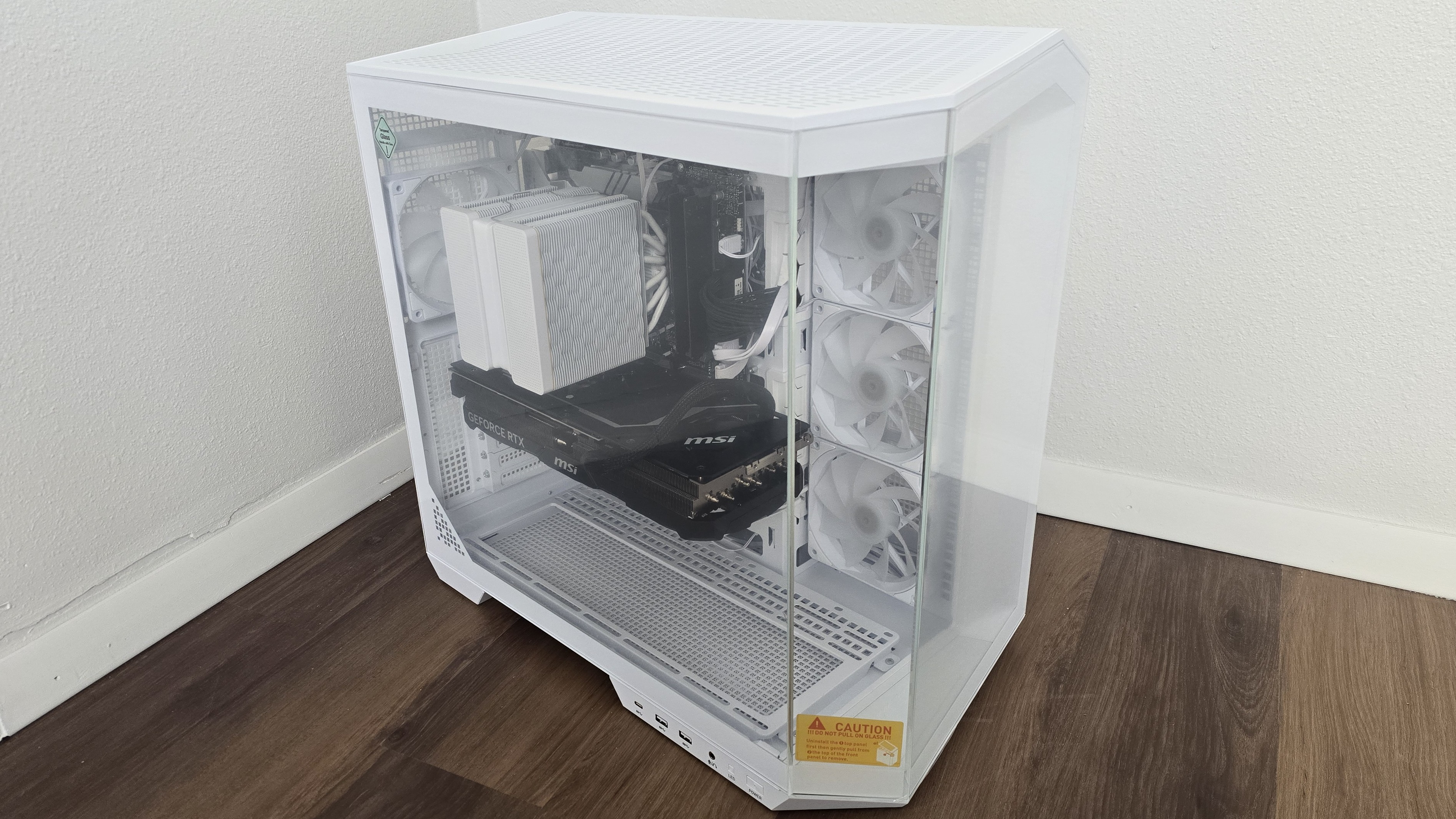
MSI’s MAG Pano 100R PZ is a nice-looking wrap-around case that includes support for vertical GPUs, back-connect motherboards, and supports eight PCIe expansion slots. The pre-installed fans work well with this case, so there’s really little reason to consider third-party fans. If this case interests you, it is available for $159.99 on Amazon as of this writing.

Albert Thomas is a contributor for Tom’s Hardware, primarily covering CPU cooling reviews.
-
Albert.Thomas Reply
Thanks for the suggestion, it's something I'll have to consider for the future!Energy96 said:Do a review of Antec C8 Curve wood.
I was pleasantly surprised by it. -
HardwiredWireless I don't understand where the idea came from that you can't have glass sides and good air flow. Having air coming from all directions at once does not improve the air flow it often makes it much worse. The best airflow would be a wind tunnel with all the air moving in one direction. A glass case seems very well suited for this. Having a vertically mounted GPU also helps a lot. A layout like the Silverstone fortress FTO2 is an excellent cooling setup.Reply -
HardwiredWireless The antec is such an ugly case though.Reply
Energy96 said:Do a review of Antec C8 Curve wood.
I was pleasantly surprised by it. -
thestryker Reply
Glass sides are totally fine it's when you get into glass front (and top too in some cases) where you run into issues. With a glass front a rotated motherboard mounting, like the FT02, would be perfect and I think the only reason this hasn't been done more is video card compatibility issues. With glass on the front and top you're limited to generally suboptimal options as there is no way to get straight through airflow. This is made worse by the fact that most don't have enough height between bottom fans and the floor to have good intake.HardwiredWireless said:I don't understand where the idea came from that you can't have glass sides and good air flow.
Personally I'd like to see some longer cases again with design language somewhat similar to the Montech HS02/HS01 (Albert's THW review of the HS02 Pro). Make it enough longer so that you could use 120mm fans on the side as well and it'd be great because it would still be relatively short and same width as a standard case. I was going to get one of the Lian-li o11 models with front mesh available, but I keep my computer under my desk and when I checked width it was too wide (this was the same problem for every other dual chamber and Thermaltake's CTE line). -
Mindstab Thrull Reply
All I have to say to that is:HardwiredWireless said:The antec is such an ugly case though.
(a) Aesthetics are subjective and
(b) some people care about functionality first. If the Antec is a strong enough contender, some people won't care how it looks.
